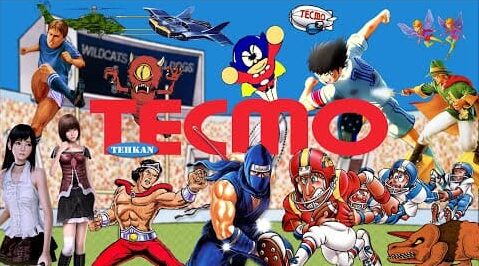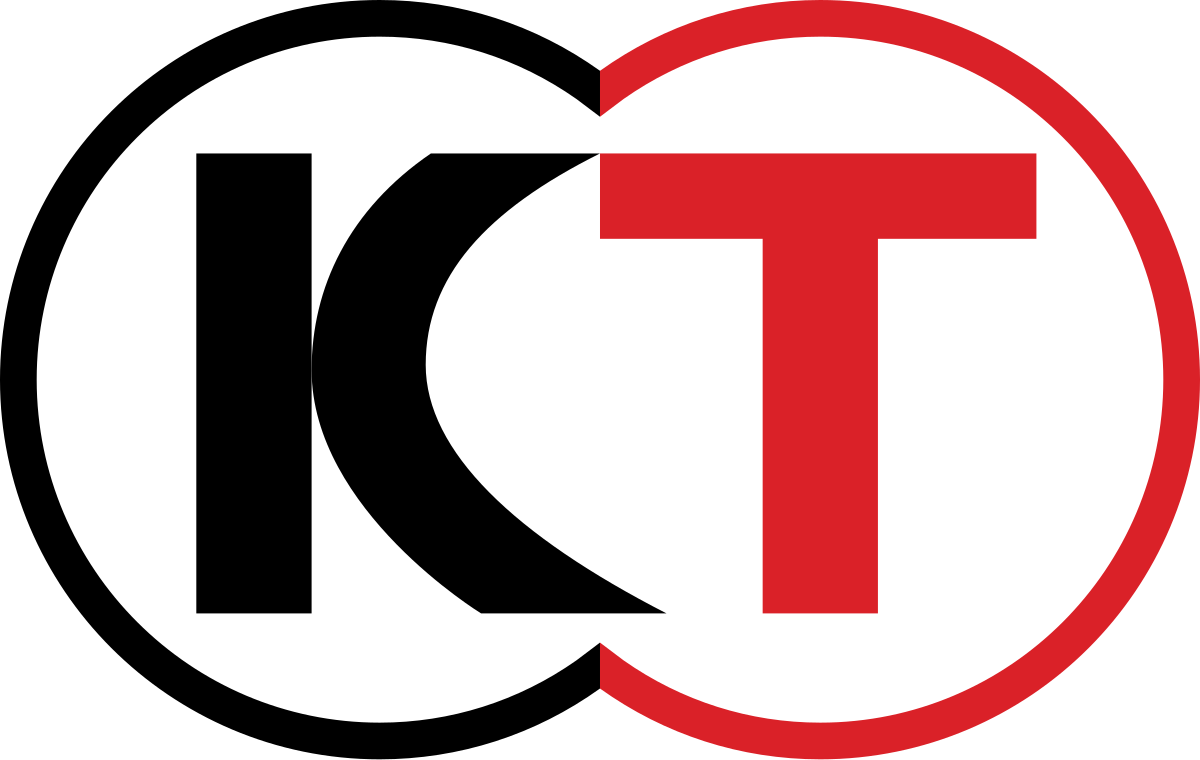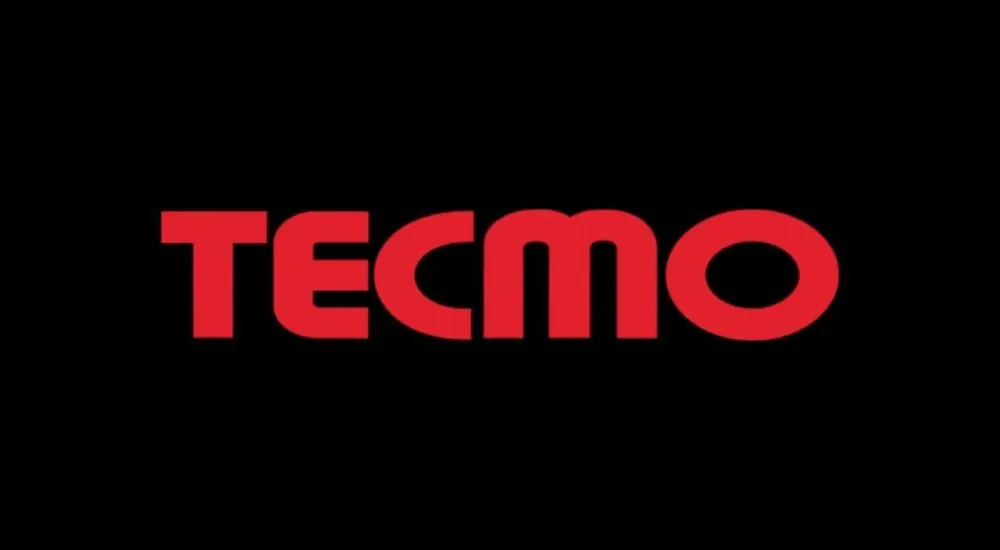Tecmo, originally founded as Tehkan Ltd. in 1967, evolved from a cleaning equipment supplier to become a prominent video game developer and publisher, known for iconic titles like Tecmo Bowl and Bomb Jack. In 2009, the company merged with Koei to form Tecmo Koei Holdings Co., Ltd., marking a significant milestone in its history of creating influential games across multiple platforms.
The Origins of Tehkan
Tehkan, the predecessor to Tecmo, was established in October 1977 when the Imperial Trustee Corporation was renamed “Tehkan Ltd.” The company’s name is derived from a Japanese phrase, though the exact meaning is not specified in the available sources. Based in Japan, Tehkan quickly became known for producing coin-operated arcade machines, laying the foundation for its future success in the video game industry. One of Tehkan’s notable early contributions to the arcade scene was the 1985 release of “Tehkan World Cup,” a soccer game that showcased the company’s ability to create engaging sports titles with innovative gameplay mechanics.
The Evolution to Tecmo
Tecmo’s evolution from its origins as Tehkan to becoming a major player in the video game industry is marked by significant milestones and strategic decisions. On January 8, 1986, Tehkan officially changed its name to Tecmo, marking a new era for the company. This rebranding coincided with the company’s expansion into home console development, which began in April 1986 with the release of “Mighty Bomb Jack” for the Famicom in Japan. The transition to Tecmo was not merely a name change but represented a shift in the company’s focus and ambitions. While Tehkan had established itself in the arcade market with titles like “Bomb Jack” and “Tehkan World Cup,” Tecmo aimed to capitalize on the growing home console market. This strategic move allowed the company to develop more complex games and expand its reach to a wider audience.
Tecmo’s early years were marked by the release of several influential titles. In 1989, the company gained significant attention when it was named as a co-defendant in a lawsuit filed by Indianapolis Colts running back Eric Dickerson against the NFLPA over the use of his likeness in the game “Tecmo Bowl.” This legal challenge highlighted the growing importance of licensing and player rights in sports video games, an area where Tecmo was at the forefront.
The company’s success in the home console market was further solidified with the release of popular franchises such as “Ninja Gaiden” and “Dead or Alive.” These series showcased Tecmo’s ability to create engaging action games with innovative gameplay mechanics and cutting-edge graphics for their time. Tecmo’s evolution also included international expansion. The company had established a U.S. division as early as March 1981, initially known as U.S. Tehkan, Inc. This early international presence allowed Tecmo to better understand and cater to the Western market, contributing to its global success.
As Tecmo grew, it faced challenges and changes in leadership. In January 2006, Tecmo president Junji Nakamura resigned, and Yoshimi Yasuda was named his successor. This change in leadership would later play a role in the company’s future direction and eventual merger with Koei.
The evolution of Tecmo from Tehkan to a prominent video game developer and publisher demonstrates the company’s ability to adapt to changing market conditions and technological advancements in the gaming industry. This transformation set the stage for Tecmo’s later merger with Koei and its continued influence in the modern gaming landscape.
Iconic Arcade Titles by TECMO
Tecmo, known for its innovative arcade games, produced several iconic titles that left a lasting impact on the gaming industry. Here’s a list of some of Tecmo’s most notable arcade releases:
- Pleiads (1981) – Tecmo’s first internally developed arcade game, featuring a mixture of gameplay elements from popular space shooters like Centipede and Space Invaders.
- Bomb Jack (1984) – A single-screen platformer where players must collect bombs while avoiding enemies, known for its challenging and addictive gameplay.
- Tehkan World Cup (1985) – An innovative soccer game that showcased Tecmo’s ability to create engaging sports titles with unique gameplay mechanics.
- Rygar (1986) – A side-scrolling action game that later gained popularity on home consoles, featuring challenging gameplay and a distinct ancient Greek-inspired setting.
- Tecmo Bowl (1987) – While more famous in its NES incarnation, the arcade version offered four-player simultaneous play and laid the groundwork for the franchise’s success.
- Ninja Gaiden (1988) – A popular action platformer that became one of Tecmo’s most famous arcade titles.
- Strato Fighter (early 1990s) – An R-Type-inspired scrolling shooter that offered two-player simultaneous play.
- Solomon’s Key (1986) – A puzzle-platformer that challenged players to navigate levels by creating and destroying blocks, similar to its popular NES counterpart.
- Star Force (1984) – A vertical scrolling shooter that, while relatively generic, contributed to the popular genre of space-themed arcade games.
These games demonstrate Tecmo’s versatility in creating titles across various genres, from sports to action to puzzle games. Many of these arcade classics have been preserved in collections like Tecmo Classic Arcade, allowing new generations of gamers to experience these influential titles.
Early Game Development by Tecmo
Tecmo’s early game development era was marked by innovation and the creation of several iconic titles that would shape the company’s future. The company’s journey into video game development began in earnest in the early 1980s, with a focus on arcade games that would later transition to home consoles.
In April 1981, Tecmo (then known as Tehkan) released its first internally developed arcade video game, “Pleiads“. This space shooter game, distributed in America by Centuri, marked Tecmo’s entry into the competitive arcade market and showcased the company’s ability to create engaging gameplay experiences.
The development process for early arcade games was notably different from modern game development. Michitaka Tsuruta, a former Tecmo developer, described the process for creating graphics: “We colored in squared paper, we transformed the results into numerical data, and then saved/wrote it as an EPROM, which we subsequently put on a PCB.” This labor-intensive process required rigorous testing to ensure proper display on cathode screens.
Tecmo’s early development teams were relatively small. For instance, the team working on “Swimmer” (1982) consisted of only six people: one for hardware, one for programming, one for sound, one for direction/management, and three part-time graphic artists. This lean structure allowed for agility in development but also meant that team members often wore multiple hats.
The company’s transition to home console development began in 1986 with the release of “Mighty Bomb Jack” for the Famicom (NES). This marked a significant shift in Tecmo’s focus, as they began to adapt their arcade successes for the growing home console market.
One of Tecmo’s most significant early developments was “Tecmo Bowl,” released in arcades in 1987 and later adapted for the NES. The game’s development showcased Tecmo’s ability to create engaging sports titles, a genre that would become one of their strengths.
The development of games for home consoles presented new challenges. Tsuruta noted that “the functionality of the console wasn’t fluid, its technical capacity was inferior to the arcade machine.” For example, a 15-color palette on an arcade machine might correspond to only 3 colors on the Famicom. Developers had to work hard to overcome these limitations while trying to maintain the essence of the original arcade versions.
Tecmo’s early game development was characterized by a focus on creating fun, engaging gameplay experiences within the technical constraints of the time. This approach laid the foundation for the company’s future success and established Tecmo as a significant player in the video game industry.
Mergers and Acquisitions
Koei Tecmo Holdings Co., Ltd. was formed through a significant merger between two prominent Japanese video game companies, Koei and Tecmo, in 2009. This merger was a strategic move to increase the scale and competitiveness of both companies in the rapidly evolving video game market.
The merger process began in August 2008 when Square Enix made an unsolicited takeover bid for Tecmo, offering to purchase shares at a 30% premium with a total bid of ¥22.3 billion. However, Tecmo declined this offer on September 4, 2008, and instead announced plans to merge with Koei. This decision was influenced by the longstanding good relationship between the founding families of Tecmo and Koei.
The merger agreement was signed swiftly, with discussions beginning on September 1, 2008, and an agreement reached just two days later. Kenji Matsubara, then President and COO of Koei, emphasized the importance of scale in the competitive video game market as a key driver for the consolidation.
On April 1, 2009, the merger was officially completed, forming Tecmo Koei Holdings. The stock exchange ratio was set at 1:1 for Koei shareholders and 0.9:1 for Tecmo shareholders, resulting in Koei shareholders holding a three-quarter stake in the new company. Kenji Matsubara became CEO of the newly formed company, while former Tecmo CEO Yasuharu Kakihara took the position of board chairman.
Following the merger, the company underwent several reorganizations:
- In 2009, various international subsidiaries were restructured. For example, Koei Europe was renamed Tecmo Koei Europe and became the first subsidiary to publish games under the new brand.
- In 2010, Koei America Corporation and Tecmo Inc. merged to form Tecmo Koei America Corporation.
- In 2011, Koei Tecmo acquired all shares of Gust Co. Ltd., making it a wholly owned subsidiary.
The merger and subsequent acquisitions have allowed Koei Tecmo to leverage the strengths of each company, resulting in successful collaborations and new game developments. For instance, the 2017 release of “Nioh” combined Koei’s expertise in Japanese history with Tecmo’s action game development skills, leading to a hit title that has sold over 7 million copies in the series.
This strategic consolidation has positioned Koei Tecmo as a stronger player in the global video game market, enabling the company to compete more effectively and create innovative, high-quality titles through synergies between its various brands and development teams.
Influence on Modern Gaming
Tecmo’s influence on modern gaming is significant and far-reaching, particularly through its innovative titles and technological advancements. One of the company’s most enduring legacies is the Tecmo Bowl series, which revolutionized sports gaming and set the standard for future football video games.
Tecmo Super Bowl, released in 1991 for the NES, is widely regarded as one of the most influential sports games of all time. It was the first sports video game to be licensed by both the NFL and the NFLPA, allowing the use of real team names and player attributes. This licensing model became the industry standard for sports games, paving the way for franchises like Madden NFL and NBA 2K.
The game’s impact extends beyond its initial release. Tecmo Super Bowl has maintained a dedicated cult following for decades, with fans creating annual roster updates and hosting widely covered tournaments. This community-driven longevity demonstrates the game’s enduring appeal and influence on gaming culture.
Tecmo’s influence is also evident in the action game genre. The Ninja Gaiden series, which began as an arcade game in 1988, set new standards for action-platformers with its challenging gameplay and cinematic cutscenes. The series’ later 3D iterations on modern consoles further cemented Tecmo’s reputation for creating technically impressive and demanding action games.
The company’s Dead or Alive fighting game series, created by Tomonobu Itagaki, introduced innovative features like interactive environments and a counter system that influenced subsequent fighting games. The series’ emphasis on realistic graphics and physics also pushed the boundaries of visual fidelity in gaming.
Tecmo’s legacy continues through its merger with Koei, forming Koei Tecmo. This consolidation has allowed for the creation of new franchises that blend Tecmo’s action game expertise with Koei’s historical themes. For example, the Nioh series combines intense action gameplay reminiscent of Ninja Gaiden with historical Japanese settings, showcasing the synergy between the merged companies.
The company’s influence extends to game development practices as well. Tecmo’s early approach to creating arcade games, which involved small, agile teams and innovative problem-solving to overcome hardware limitations, laid the groundwork for modern indie game development methodologies.
In the realm of sports games, Tecmo’s approach to balancing realism with arcade-style fun in Tecmo Super Bowl continues to influence modern sports game design. The game’s ability to distill the complexity of American football into an accessible yet deep experience remains a benchmark for sports game developers.
Tecmo’s technological innovations have also had a lasting impact. The company’s early experimentation with 3D graphics and physics in games like Dead or Alive helped push the industry towards more realistic and immersive gaming experiences.
In conclusion, Tecmo’s influence on modern gaming is multifaceted, spanning genres from sports to action games. Its innovative approach to game design, technological advancements, and creation of enduring franchises continue to shape the gaming landscape, even as the industry evolves into new territories.
Legacy of Tecmo Bowl
Tecmo Bowl, particularly its NES iteration Tecmo Super Bowl, has left an indelible mark on the video game industry and sports gaming culture. Released in 1991, Tecmo Super Bowl was a groundbreaking title that set new standards for sports video games and continues to influence modern gaming.
One of the most significant aspects of Tecmo Super Bowl’s legacy is its pioneering use of official licenses. It was the first sports video game to be licensed by both the NFL and the NFLPA, allowing the use of real team names and player attributes. This licensing model became the industry standard for sports games, paving the way for franchises like Madden NFL and NBA 2K.
The game’s impact extends far beyond its initial release. Tecmo Super Bowl has maintained a dedicated cult following for decades, with fans creating annual roster updates and hosting widely covered tournaments. As of June 2007, the Tecmo Bowl series had sold 5 million units worldwide, demonstrating its commercial success and enduring popularity.
Tecmo Bowl’s legacy is also evident in its critical acclaim. In the September 1997 issue of Nintendo Power, the game was ranked 30th in a list of the top 100 games of all time. Both GameSpot and Time have included Tecmo Bowl for the NES in their lists of all-time greatest video games, with Time noting that the arcade-like controls and “quasi-realistic teams and players” made it a “breakout hit that’s still fun to pick up and play to this very day”.
The game’s character representations have become legendary in their own right. Bo Jackson’s character in Tecmo Bowl was called the “greatest video game athlete of all-time” by ESPN and USA Today. Some gamers claimed that Jackson’s character could run for as many as 1,000 yards in a single game, reflecting the real Jackson’s extraordinary athletic abilities.
Tecmo Bowl’s influence on modern gaming is also evident in its approach to balancing realism with arcade-style fun. This approach continues to influence modern sports game design, as developers strive to create accessible yet deep experiences that capture the essence of the sport.
The game’s legacy has been further cemented through various re-releases and remakes. Tecmo Bowl has been made available on multiple platforms over the years, including the Wii Virtual Console, Nintendo 3DS Virtual Console, and as part of the NES Classic Edition. In 2010, Tecmo Bowl Throwback was released for Xbox 360 and PS3, offering a remake of the classic with updated graphics while maintaining the original gameplay.
Tecmo Bowl’s enduring popularity has even led to its inclusion in popular culture. The game has been featured in television shows like Family Guy and has been the subject of commercials featuring NFL stars.
In conclusion, Tecmo Bowl’s legacy is multifaceted, encompassing its innovative licensing model, enduring popularity, critical acclaim, influential gameplay mechanics, and cultural impact. Its influence continues to be felt in the sports gaming genre and the wider gaming industry, cementing its place as a true classic in video game history.
Final Thoughts and Impact
Koei Tecmo Holdings Co., Ltd. has emerged as a significant player in the video game industry, building on the legacies of both Koei and Tecmo. The company’s journey from its formation in 2009 to its current status demonstrates its ability to adapt, innovate, and thrive in a competitive market.
Following the merger, Koei Tecmo has continued to evolve and expand its operations. In 2014, the company changed its trade name to Koei Tecmo Holdings Co., Ltd., unifying the English notation of the company and group companies from “TECMO KOEI” to “KOEI TECMO” to improve global recognition and brand value.
The company’s structure now includes several key subsidiaries:
- KOEI TECMO GAMES CO., LTD.: Responsible for planning, development, and sale of software for personal computers and home video game consoles, as well as online and mobile games.
- KOEI TECMO WAVE CO., LTD.: Engaged in planning, operation, and management of arcade facilities, as well as LCD development for slot and pachinko machines.
- KOEI TECMO NET CO., LTD.: Handles various online services and e-commerce operations.
- KOEI TECMO QUALITY ASSURANCE CO., LTD.: Established in 2020 to strengthen the company’s quality control system.
Koei Tecmo has also expanded its international presence with subsidiaries in key markets such as KOEI TECMO AMERICA Corporation in the USA and KOEI TECMO EUROPE LIMITED in the UK.
Financially, Koei Tecmo has shown strong performance. As of the latest available data, the company reported revenue of 84.58 billion yen and a net income of 33.79 billion yen. With a market capitalization of 507.84 billion yen and 2,530 employees, Koei Tecmo has established itself as a significant entity in the gaming industry.
The company’s business model encompasses four main segments:
- Entertainment: Development and sale of entertainment content products.
- SP (Slot and Pachinko): Contract development of commercial amusement equipment and related royalty income.
- Amusement Facility Operation: Management of game center stores.
- Real Estate: Operation and management of real estate properties.
Koei Tecmo has also ventured into the venture capital business, demonstrating its commitment to fostering innovation in the gaming and technology sectors.
The merger and subsequent reorganizations have allowed Koei Tecmo to leverage the strengths of both Koei and Tecmo, resulting in successful collaborations and new game developments. The company continues to produce popular franchises from both its Koei and Tecmo lineages, while also creating new intellectual properties that blend the expertise of both companies.
As the gaming industry continues to evolve, Koei Tecmo remains positioned to adapt and innovate, building on its rich history and diverse portfolio of games and services. The company’s ongoing success serves as a testament to the strategic vision behind the merger and the effective integration of two storied gaming companies.
Resources


















